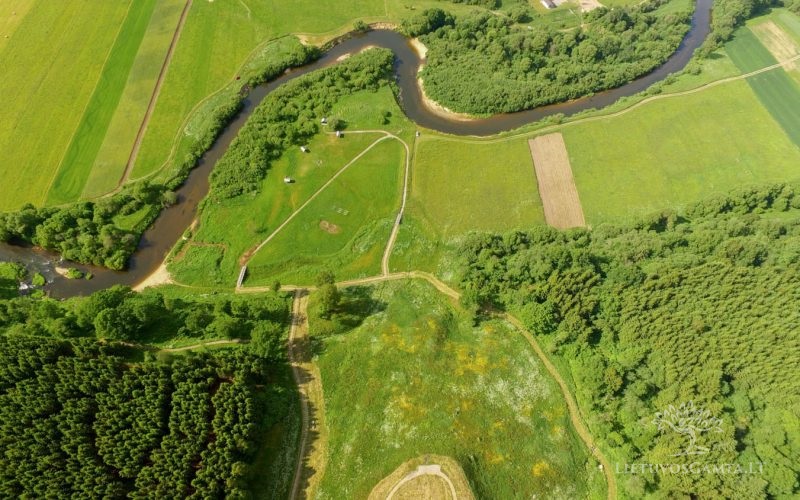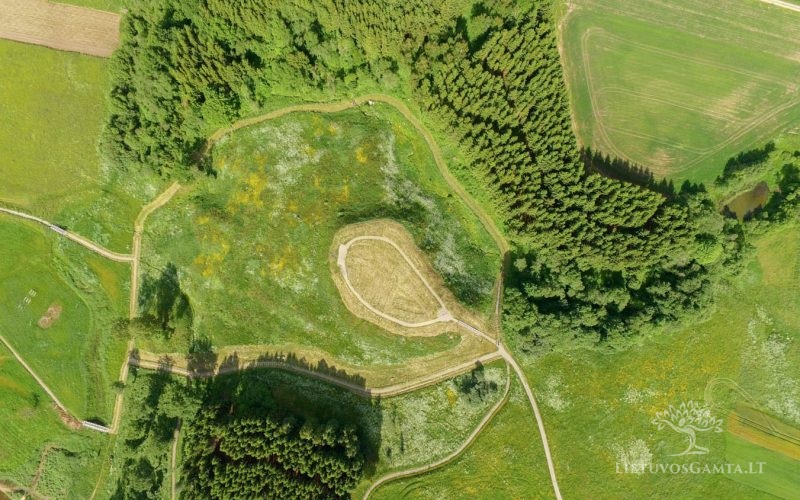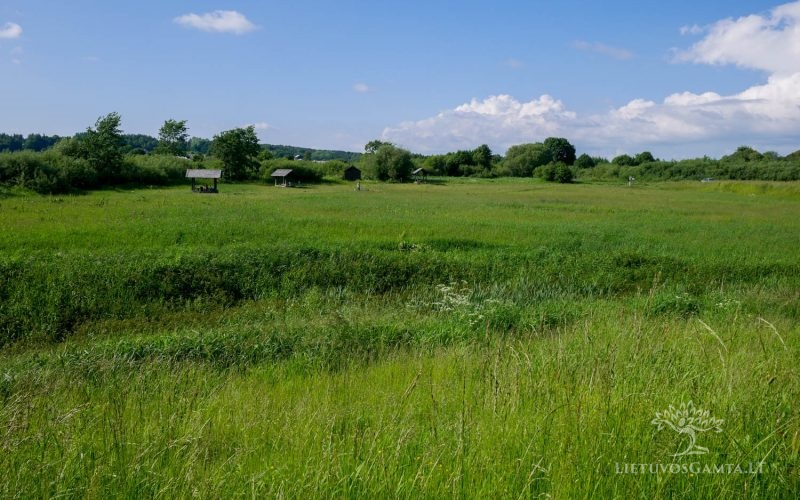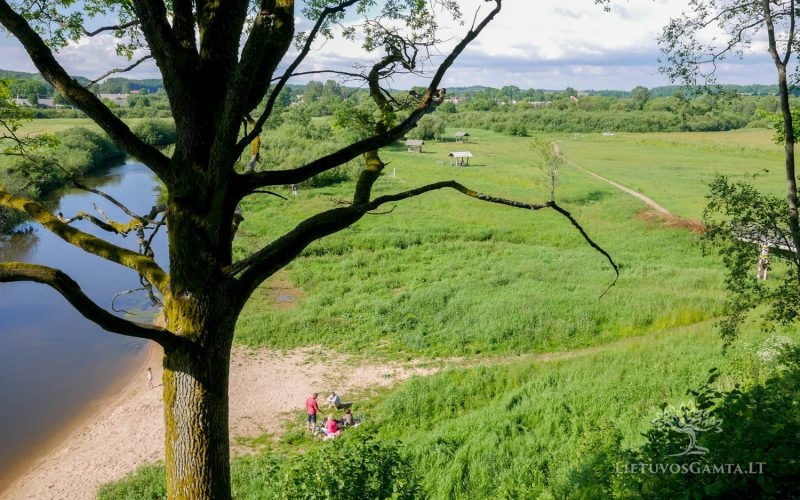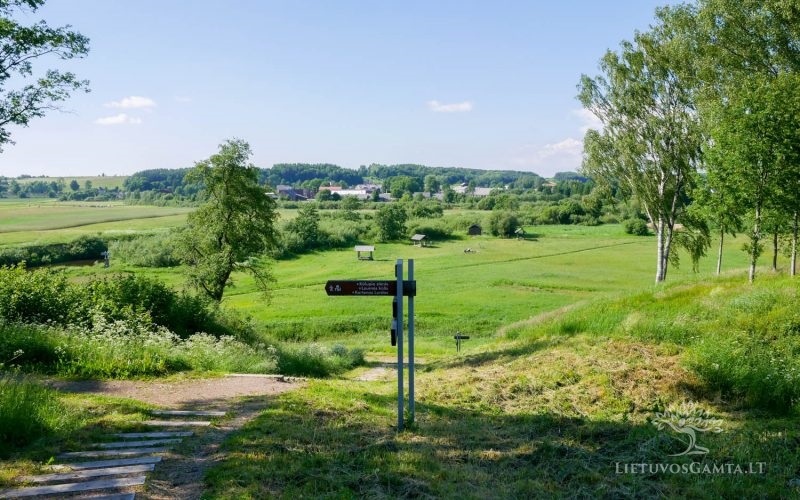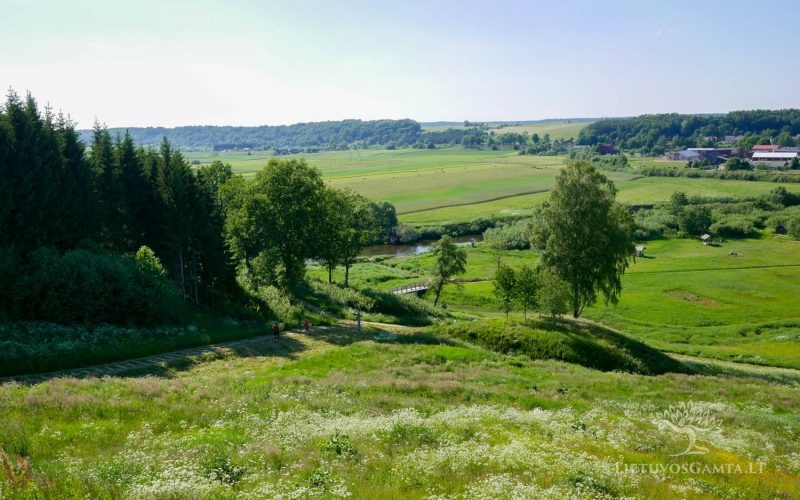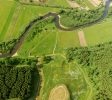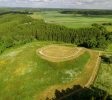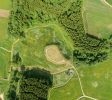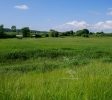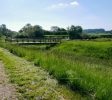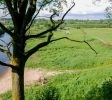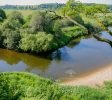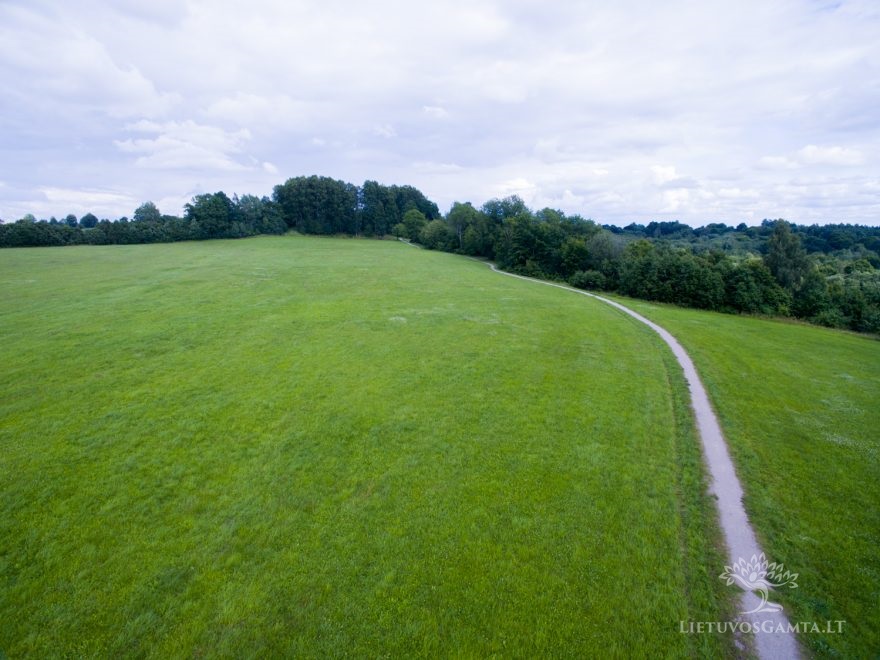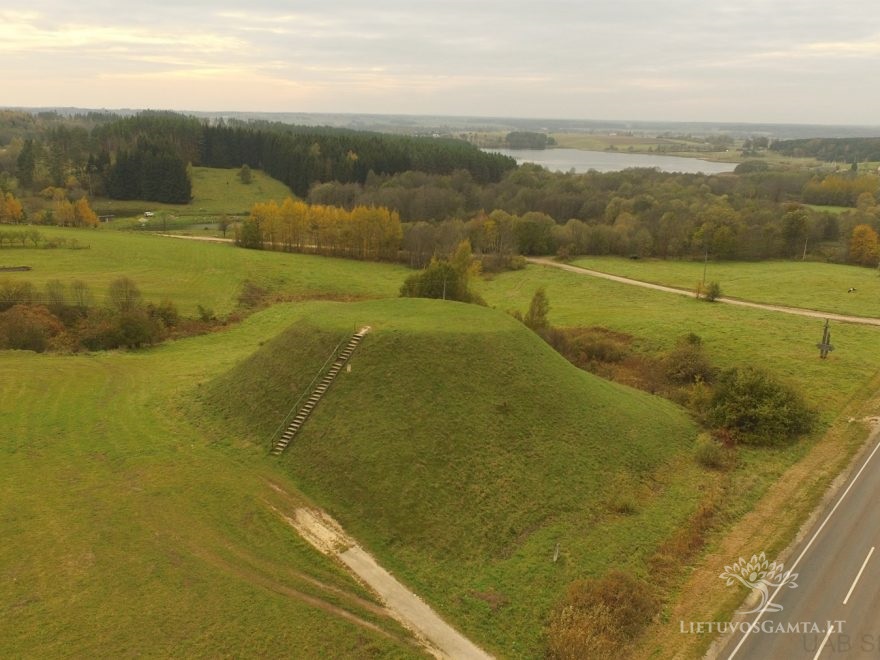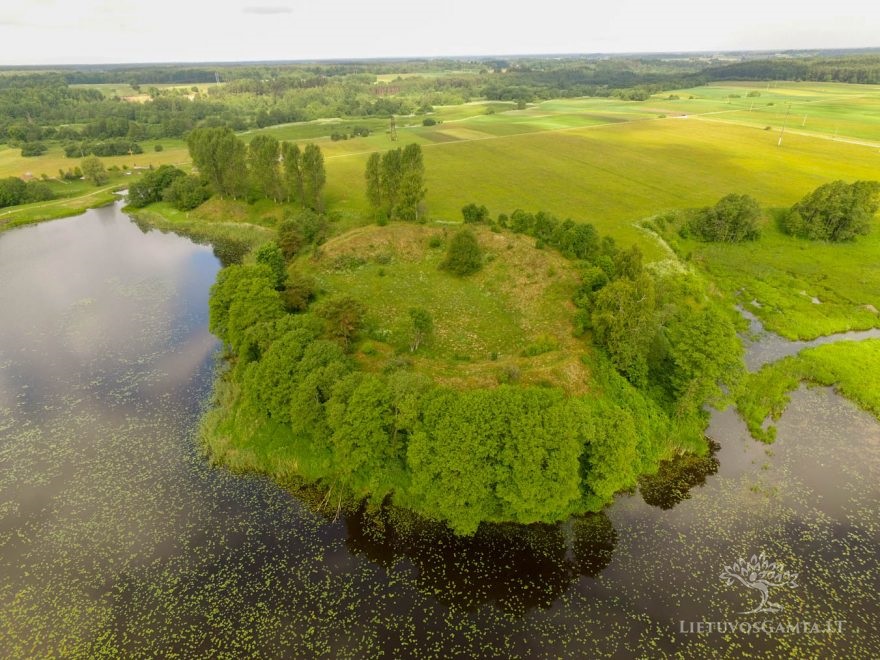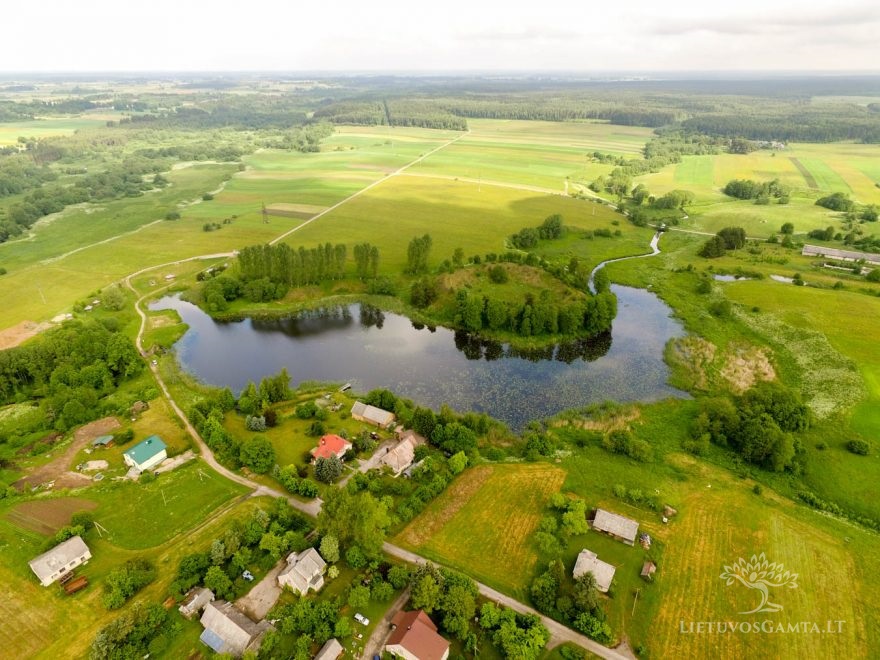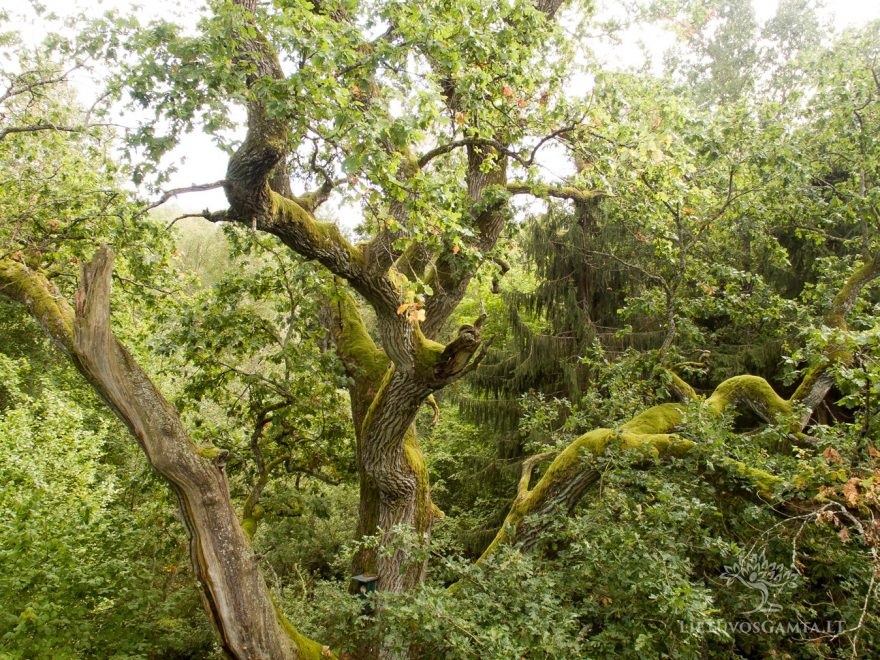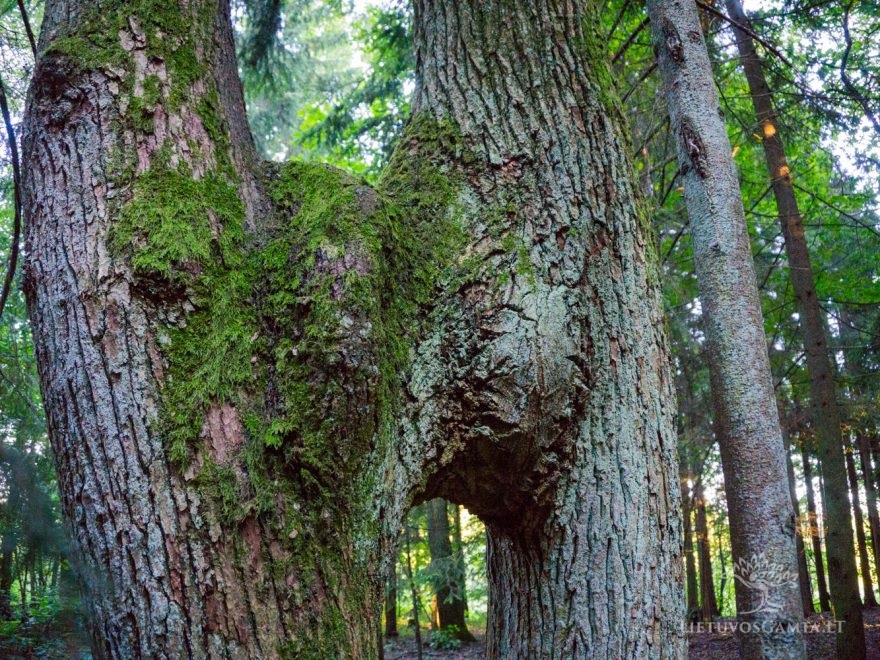Kartena settlement of a mound with a settlement
Kartena eldership, Kretinga district
A beautiful Kartena Mound is situated in Kretinga district. And close to the hill, which is also called Pilis or Pilale by the locals, a foothill settlement was situated in the 13th century. It is said that the settlement was large, noisy and maybe very rich, because there are especially a lot of evidences of its existence: from fragments of pottery, items of brass or the fragments of burnt bones to the traces of ancient houses and fireplaces. The local people did all their best to ensure welfare of Kartena fortress and in order its residents would have everything they need! They carried from the settlement to the top of the hill buckets filled with fresh milk, sacks of grain and young piglets for the luxurious lunch of the Samogitian king, and beautiful ceramic pots made with help of a rotating pottery loom, items of forger iron or fur coats. Almost every day the locals climbed this way to Kartena Mound, which is also called Luztis Hill. According to the old people, the mound was built by Samogitiants who fought against Swedes and Russians. There was a huge castle on that hill near Kartena. The castle was ruled by the Samogitian king. Swedish and Russian troops had once arrived at the same time to attack Samogitians. According to the legends, the name of Kartena originated during those battles. Swedes and Russians had caught up with each other in the valley of the River Minija as they could not reach the agreement who has the right of priority to attack the castle. The leader of Samogitians, who was watching the battle in the valley from the towers of the castle, exclaimed to his subordinates in Samogitian language: “Veizekiet, kare tenā!” (in Lithuanian “Ziurekite, karas tenai!”, in English “Look, the war is there”). Thereafter, the place is called Kartena. Some ancestors remember the battles with the entrants. For this reason, they preferred calling the mound the Hill of Swedes.
Even though the people of the settlement did all their best in order to ensure the welfare of the Samogitian king who lived in the castle, the things ended bad for him. The old people recall that he died together with a large number of the riders on the road between Kretinga and Kartena.
About midnight, dead military heroes come out of their coffin and exercise fighting with each other. The warriors are the flaming images, and the king appears dressed in white and rides the white horse. When the clock strikes one o’clock in the morning, the warriors and the king find their graves shouting: The time will pass quickly and one day we will come again!“
If you will ever travel to Kretinga district, you should also visit Kartena. And when you will climb the stairs on the castle hill, look around: the mound overlooks the surroundings of the old Medieval settlement!
